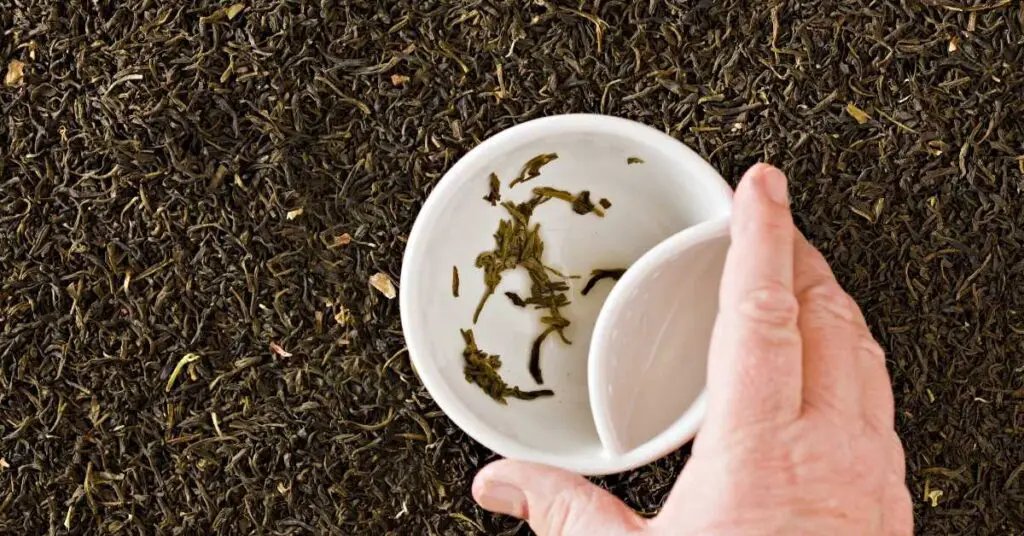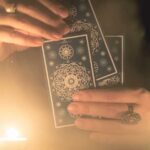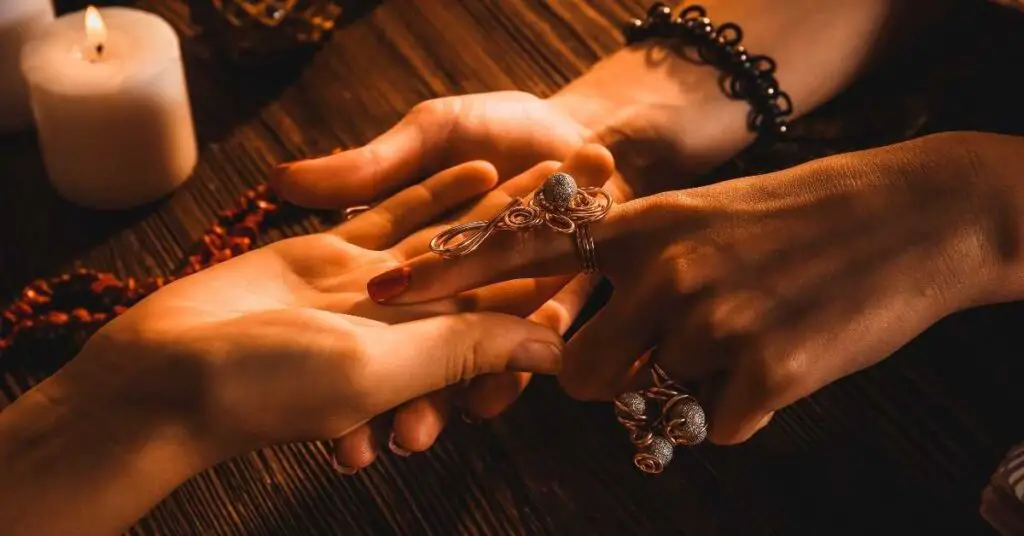Reading tea leaves simply means to look at the tea leaves in the bottom of a cup for a sign of what will happen in the future.
Reading the tea leaves has been used for centuries as a way to prognosticate the future. The practice is simple: after finishing a cup of tea, the drinker looks at the leaves in the bottom of the cup and interprets their patterns as a sign of what is to come. While the interpretation of tea leaf patterns is often subjective, there are some common symbols that are typically associated with specific events or circumstances. For example, a heart shape might symbolize love or happiness, while a spiral shape might indicate travel. Although reading tea leaves is not an exact science, it can be a fun way to take a glimpse into the future.
How do you read the tea leaves?
One way to read tea leaves is by using the technique of tasseomancy. This involves analyzing the patterns made by tea leaves in a cup of tea. The reader looks for images that resemble objects, people, or animals, as well as for any symbols that may have personal meaning. By interpreting the patterns, the reader can gain insight into the future.
Another way to read tea leaves is by using fortune telling cards. To do this, the person would shuffle the cards and choose a certain number, which would correspond to a position in the cup. The position would then be interpreted based on the card that appears in that position. For example, if an Ace of Cups appears in the position of love, it would suggest that the person will soon experience love or happiness.
Tea leaf reading is a practice with a long history, and there are many different ways to interpret the patterns made by the leaves. Whether you use tasseomancy or fortune telling cards, tea leaf reading can be a fun way to learn more about yourself and your future.
What do the symbols in the tea leaves mean?
There are many different symbols that can appear in tea leaves, and each one can have a different meaning. For example, a spiral symbol can represent new beginnings, while a square symbol can represent stability. In general, the symbols that appear in tea leaves are meant to offer guidance and advice. However, it is important to remember that there is no one-size-fits-all interpretation of the symbols. What a particular symbol means will depend on the individual’s personal situation and belief system.
With that said, there are some generalities that can be applied to most interpretations of tea leaf symbols. For example, circles typically represent unity or wholeness, while triangles often represent change or growth. Ultimately, it is up to the individual to decide what the symbols in their tea leaves mean.
What are some of the most common interpretations of tea leaf readings?
There are a number of different interpretations of tea leaf readings, although some of the most common revolve around the idea of predicting the future. In this context, tea leaves are believed to be able to reveal important information about a person’s love life, career, or health.
Other interpretations focus on the present or past, with tea leaves interpreted as symbols that can provide insights into a person’s current situation or shed light on events from their past.Regardless of their specific meaning, tea leaf readings are often seen as a way to gain greater self-awareness or understanding.
For some people, they may simply be seen as an enjoyable way to relax and take stock of their life. Others may view them as a more serious tool for divination and self-reflection. Either way, tea leaf readings can be a fun and interesting way to learn more about yourself and your future.
How can you use this practice to gain insight into your own life?
Many people are familiar with tea leaf reading as a way to gain insight into other people’s lives. However, did you know that you can also use tea leaf reading to gain insight into your own life?
This ancient practice can be used to help you gain clarity on your current situation, understand your challenges and obstacles, and get in touch with your intuition. To get started, simply brew a cup of tea using loose leaves. Once you have finished drinking the tea, swirl the remaining leaves around in the cup and then turn it upside-down on a saucer. Take a moment to quiet your mind, and then examine the patterns that the leaves have formed. See if you can identify any symbols or images that stand out to you. Allow the meanings of these symbols to guide you as you reflect on your current circumstances. With a little practice, you’ll be surprised at how much insight tea leaf reading can offer!
Tea leaf reading is just one type of divination – what are some other methods out there?
There are many different types of divination, and each culture has its own traditional methods. Tea leaf reading is just one example. Other popular divination techniques include scrying, which involves gazing into a crystal ball or other reflective surface in order to gain insight; tarot card reading, which uses a special deck of cards to interpret the past, present, and future; and palmistry, which analyzes the lines on a person’s palm to reveal their character and destiny.
Divination can be used for a variety of purposes, from making decisions about important life choices to simply gaining a greater understanding of oneself. No matter what method you choose, divination can be a fun and enlightening way to gain insights into the world around you.FAQ about tea leaf reading
FAQ about tea leaf reading
How can I learn to read tea leaves?
There is no one-size-fits-all answer to this question, as everyone may have their own unique way of reading tea leaves. However, there are some resources that can be helpful for beginners. There are a number of books available on the subject, which can provide you with an introduction to the symbolism associated with different shapes and patterns. You might also want to find a local group or meetup where you can practice with others. Or, if you prefer, there are also online courses available that can teach you the basics of tea leaf reading.
Ultimately, the best way to learn is to simply dive in and start practicing. The more you do it, the better you’ll become at interpreting the symbols in your tea cup. With a little practice, you’ll be surprised at how much insight tea leaf reading can offer!
What do I need in order to read tea leaves?
All you need is a cup of tea and a willingness to explore! When you’re ready to get started, simply brew a cup of tea using loose leaves. Once you have finished drinking the tea, swirl the remaining leaves around in the cup and then turn it upside-down on a saucer. Take a moment to quiet your mind, and then examine the patterns that the leaves have formed. See if you can identify any symbols or images that stand out to you. Allow the meanings of these symbols to guide you as you reflect on your current circumstances. With a little practice, you’ll be surprised at how much insight tea leaf reading can offer!
Are there any risks associated with tea leaf reading?
No, there are no known risks associated with tea leaf reading. However, as with any activity that involves focusing your attention and energy on a particular task, it is important to be mindful of your surroundings and not get so caught up in the activity that you neglect your own safety. For example, if you are using a heat source to brew your tea, be sure to take precautions to avoid burns or other injuries. As long as you use common sense and pay attention to your surroundings, tea leaf reading should be a safe and enjoyable activity.
Are there any special tools I need for tea leaf reading?
No, there are no special tools required for tea leaf reading. All you need is a cup of tea and a willingness to explore!
Conclusion
Tea leaf reading is a type of divination that can be used for a variety of purposes, from making decisions about important life choices to simply gaining a greater understanding of oneself. No matter what your reasons for wanting to learn tea leaf reading, it can be a fun and enlightening activity. With a little practice, you’ll be surprised at how much insight this ancient practice can offer!












